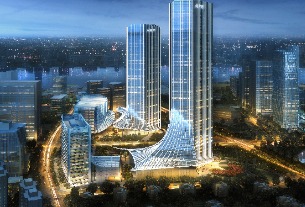According to the December 2018 edition of CBRE’s “Hotel Horizons,” the annual growth in revenue per available room for U.S. hotels is forecasted to decelerate from 2.8% in 2018 to 0.1% in 2021. As the main source of hotel revenue is plateauing, hoteliers are looking up and down their operating statements to find alternative sources of income. For hotels that operate a spa, this department has stood out as a bright spot not only for growth in revenue, but gains in profits as well.
The slowdown in revenue growth will be particularly acute in the nation’s major markets. Since 2010, the majority of new hotel rooms have entered into the larger urban cities, making market conditions very competitive. Therefore, urban hotels are increasingly relying on their spa operations not only to boost revenue, but to help define the identity and character of the property within the greater marketplace.
At first, spas were added to urban corporate and convention hotels to remain competitive with resorts for group demand. Now, operating a hotel spa on premise promotes an environment of wellness throughout the hotel that is desired by all types of travelers looking to maintain their healthy routines while away from home.
Since 2007, CBRE has published the annual “Trends in the Hotel Spa Industry” report. For the 2018 edition, 192 hotels across the U.S. provided detailed revenue and expense data for their spa operations during 2017. Of the total sample, 60 spas were in transient hotels located within the nation’s major markets. For this analysis, we refer to these properties as “urban hotels,” versus the remainder of the sample which consists of traditional resorts located in rural or remote destinations.
Revenues
In 2017, urban hotel spas enjoyed a 6.5% increase in revenue. This is greater than the 3.1% increase observed at resort spas. During the year, spa revenues represented 3.5% of total hotel revenue at resort hotels. As expected, this is greater than the same ratio at urban hotels, but not by much. In 2017, spa revenue accounted for 3.1% of total revenue at urban hotels.
One reason urban hotel spas can generate significant levels of revenue is their ability to capture customers from the local market, not just hotel guests. In 2017, local residents and members accounted for 59% of spa department revenue at urban hotels. This compares to 41% at resort hotels. In addition to paying for spa services, local patrons are a source for other ancillary revenue, such as the spa’s retail shop and the hotel’s restaurants. Local membership programs, while providing a steady income stream, serve as an important marketing tool and help increase awareness of a hotel within the local community.
Urban hotel spas are also more efficient at capturing revenue than their resort counterparts. In 2017, urban hotel spas captured $226.57 in revenue per-square-foot compared to $180.23 at resort spas. This efficient use of space is particularly important for urban hotels where land is scarce and development costs are much higher. Urban hotel spa customers also spend slightly more per treatment ($164.71) compared to resort spa customers ($162.03).
Expenses and profits
Because of their location, urban hotel spas experience increased costs of operations. Accordingly, urban hotel spa department profit margins (21.4%) are less than those at resort spas (25.9%). Not only are operating costs greater at urban spas, they are increasing at a faster pace. From 2016 to 2017, total spa department expenses at urban hotels increased by 4% compared to 0.9% at resort spas.
Labor costs are the largest expense category for all hotel spas. At urban hotels spas, labor costs average 57.6%, compared to 55.3% at resort spas. Like overall department expense trends, labor costs at urban hotel spas grew at a greater pace (3.9%) than labor costs at resort spas (2.9%) from 2016 to 2017.
Fortunately for urban hotel spa owners, the relatively strong increases in revenues offset the burden of rising operating costs. For the seventh consecutive year, urban hotels (16.8%) achieved greater growth in spa department profits compared to resort properties (9.8%).
Discretionary incomes are increasing, as is the desire for self-care and wellness. This is true not just for hotel guests, but for local residents as well. As access to wellness services becomes more commonplace in residential communities and in the workplace, guests will increasingly expect hotels to offer these same services. Hotel guests will even make travel-based decisions based on such offerings. Therefore, hotels that capitalize on their spa and wellness services have the opportunity to increase revenues and profits. In turn, this will increase the value of the hotel for owners and operators.
Read Original Article




